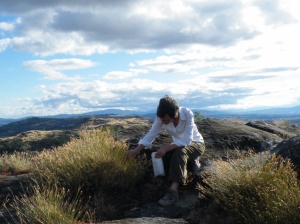Pina, F., Alejo-Armijo, A., Clemente, A., Mendoza, J., Seco, A., Basílio, N. & Parola A.J. (2021) Evolution of Flavylium-Based Color Systems in Plants: What Physical Chemistry Can Tell Us.
International Journal of Molecular Sciences,
22(8), 3833. DOI:10.3390/ijms22083833 (IF2021 6,208; Q1 Biochemistry & Molecular Biology)
Anthocyanins are the basis of the color of angiosperms, 3-deoxyanthocyanins and sphagnorubin play the same role in mosses and ferns, and auronidins are responsible for the color in liverworts. In this study, the color system of cyanidin-3-O-glucoside (kuromanin) as a representative compound of simpler anthocyanins was fully characterized by stopped flow. This type of anthocyanin cannot confer significant color to plants without intra- or intermolecular interactions, complexation with metals or supramolecular structures as in Commelina communis. The anthocyanin’s color system was compared with those of 3-deoxyanthocyanins and riccionidin A, the aglycone of auronidins. The three systems follow the same sequence of chemical reactions, but the respective thermodynamics and kinetics are dramatically different.

